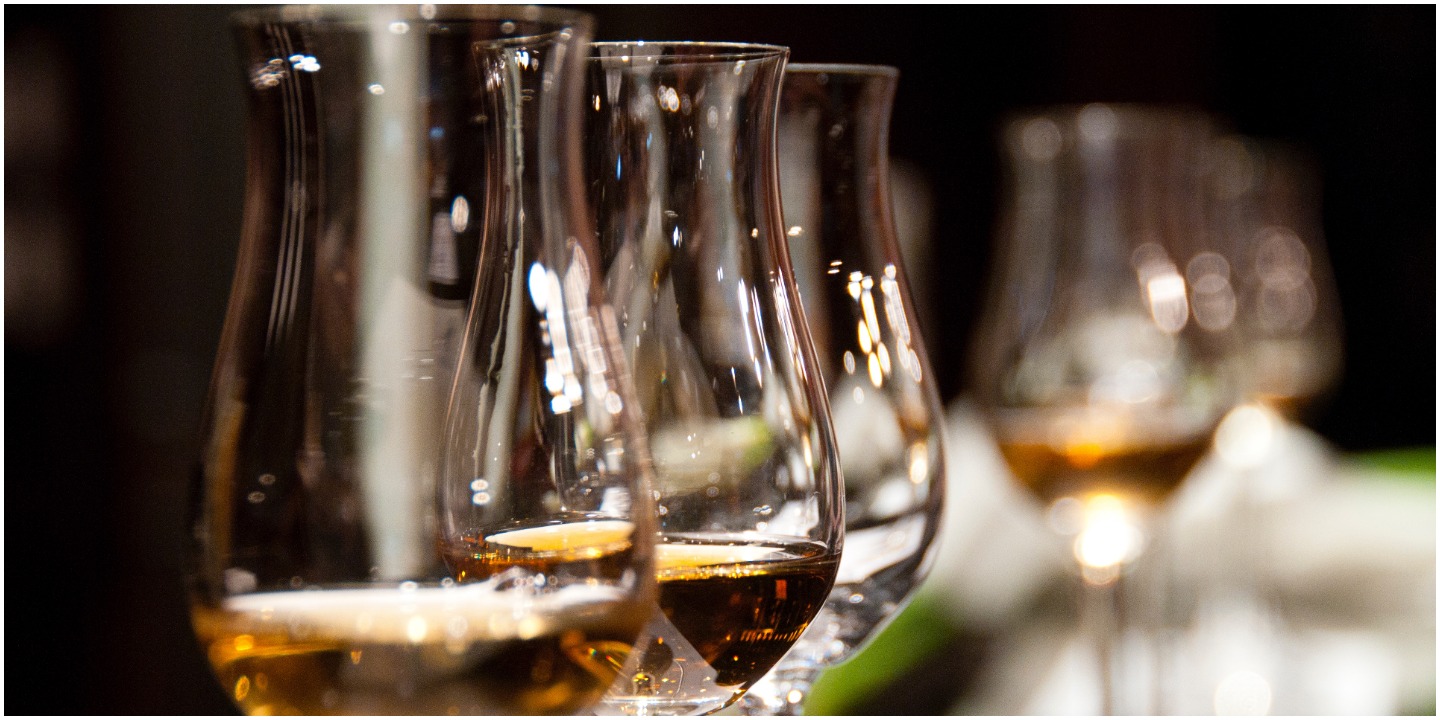Nose, palate, finish: a beginner’s guide to whisky tasting
Uncategorized
If you’ve just started your journey towards an appreciation of whisky and are starting to think about how to improve your whisky tasting, then welcome to the club.
But, before we begin talking about oaks and peats, remember: it doesn’t matter how you got to this stage. Don’t feel embarrassed by not knowing much about whisky yet – everybody was at this stage once.
Whisky drinking can sometimes have a bit of stale image – it seem be a little insular, exclusive and, dare we say it, pretentious.
But don’t let that put you off, the tides are shifting. Whisky is slowly ditching that image, and we love it when we see new faces trying a decent dram for the first time.
And, while some people may have started their whisky journey drinking fine single malts with their dads, a great deal more started on high-street blends or sweet, sugary whiskies (we won’t name names, but they might rhyme with Black Spaniels, Wire Fall and Glove ‘n’ Covert).
So, like we said, it doesn’t matter how you got here – or how much you already know about whisky – what matters is that you want to find out about whisky tasting.
And by the end of this guide, you’ll know enough to confidently pick out some oaky notes in a single malt without even breaking a sweat.
Whisky tasting: a beginner’s guide
First things first:
Before you start, it’s a good idea to get prepared. Grab yourself any glass that will hold your whisky. In the immortal words of Nick Offerman, ‘if a vessel holds a beverage without dripping or spilling, then I consider it an appropriate vessel’.
(Pro tip: although we’re with Nick on the glass front for sitting down and enjoying a dram, to get the most out of your first whisky tasting session, try and get yourself a glass that is wider at the bottom than the top. A glencairn is a decent – and affordable – option. This is because the shape grabs the smell of the whisky and directs it at your nose, allowing you to do a better job of detecting certain aromas.)
Also, if you can, grab yourself a few whiskies. They don’t even have to be particularly expensive or of decent quality, just enough of a variety for you to start noticing the differences between them. (In fact, you can learn an awful lot about good whiskies by comparing them to other whiskies that are lacking.)
Step One: Pour your whisky.
There’s not much to this. Grab a bottle, grab a glass, pour.
Easy.
If you want to be a real pro, take a look at the colour of the whisky. You can learn a lot about a whisky just by looking at it.
Step Two: Nose the whisky (or, in other words, give it a good sniff)
This is probably the key step, and the one that you’ll want to practise lots.
Most whiskies are going to reveal their characteristics to your nose straight away. Experts often say that tasting the whisky should only confirm what you’ve got from your nose. (No pressure, then.)
To nose it correctly, swill the whisky around the glass – this releases the aromas of the whisky – and then bring the glass to your nose. Gently, take a waft of the aroma. Don’t take a huge sniff, just let the smell work its way up your nose and see what you can detect.
You don’t have to think about exact notes either. Sometimes, like with a Lagavulin or a coastal whisky, you’ll be able to pick up the smell of the sea or salt. With other whiskies, it might remind you of your dad’s shed or Christmas time.
From there, you might be able to deduce that the whisky is going to have an oaky taste (if you can smell a shed) or perhaps fruity notes (like a Christmas cake).
Just getting to that stage on your first whisky tasting is impressive – so take a moment and pat yourself on the back.
Step Three: Taste it
Here’s the good bit.
Take a small sip and roll it around your mouth a little.
What sensations are you getting? Is it mellow or punchy? Is it dry (a little like red wine) or smooth and fruity (like a port)?
Note them down.
Then, once you’ve picked up a few of the notes on the palette, swallow the whisky.
Try to ignore any of the alcohol burn and look for different flavours to emerge or reveal themselves. Dry oak, vanilla and salt are all quite common finishes, but the possibilities are endless.
Also, take note of the length of time you can taste these flavours for. If they’re fleeting, that’s called a short finish. If the flavours cling on for dear life, then that’s a long finish. If it’s somewhere in the middle, that’s a medium finish. (What a surprise, eh?)
Step Four: Taste it again
Now you know what you’re looking for, take another sip. See if you can narrow down your initial impressions a little bit more.
If you really want to get the most out of this whisky, add a little drop of water. (Whisky purists of the world despair!)
When you sip a dram casually, it’s completely up to you whether to take it with water. But when you’re tasting, a drop or two of good ol’ H2O can open up the whisky and allow new flavours to emerge. It’ll also lessen the initial burn of alcohol, allowing you to get more of the palette notes right off the bat, rather than waiting for the burn to die down.
If you’re tasting a cask-strength whisky, a drop of water is especially useful, those high ABVs can really numb your tongue. (But in the best possible way.)
And that’s it.
Of course, there’s much more to whisky tasting than just this. But this is the basic principle, the rest just comes with practise.
And remember, everybody’s palette is different.
There are no right or wrong answers when it comes to whisky tasting – and that’s important to remember.
Whisky tasting is designed to enhance your appreciation of the whisky; it’s not a competition to see who has a better or more sophisticated palette.
Just grab a dram, have a whiff, take a sip and enjoy yourself. If you’re not enjoying yourself, what’s the point? It’s a treat, not a chore.




Excellent and unpretentious lesson in whisky tasting. I have a pub in Edinburgh and this is really useful to pass onto the bar team for training purposes. Thank you.